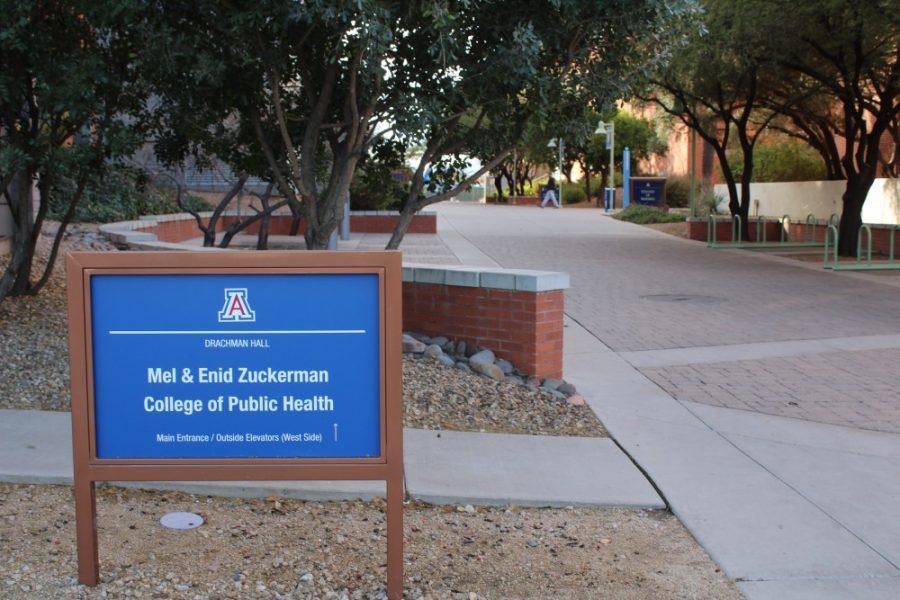Recently, the University of Arizona Center for Rural Health received a $2.2 million grant to work with the Arizona Department of Health Services.
The Substance Abuse and Mental Health Services Administration awarded the grant to train first responders to administer naloxone, an opioid reversal agent. In the wake of 790 deaths in Arizona alone throughout 2016, Governor Doug Ducey declared a public health emergency.
In response, Taylor George, a UA alum and ADHS section chief of the Bureau of Emergency Services and Trauma System assisted in obtaining the grant and will lead the project.
AzCRH will help with educational elements, teaching police and other first responders how to identify symptoms and use naloxone.
RELATED: ‘Marriage’ of ideas: Husband and wife team-up to combat opioid epidemic
“But we also want to go beyond that,” said AzCRH Director Daniel Derksen. “We want to do screening and brief intervention so we’re not just addressing the immediate issue of the overdose.”
In many cases, when overdoses take place in rural areas the nearest hospital or police station is 30-40 miles away.
“If you overdose with an opioid and stop breathing, it only takes about four minutes to do irreversible brain damage,” Derksen said.
Typical symptoms of drug overdose include constricted pupils, pale skin and heavy sleeping, as well as slow and shallow breathing. Opioids typically slow heart rate, meaning overdoses can stop the heart all together.
Naloxone works as an opioid antagonist; it can be injected through the nose and into the respiratory system to counteract the effects of the opioids. It is only a temporary fix, and patients must be transported to a hospital for more thorough treatment.
“I always encourage people to better understand the medications they’re on,” Derksen said. “You wouldn’t eat food you don’t know the name of, for example.”
One issue with drug distribution, Derksen said, is that many drugs are over-prescribed, and that people take more than what they need.
“If you can develop lifelong customers, then the business model for that is get more people to take them,” Derksen said. “And when you have something that’s highly addictive, you can charge what the market will bear.”
A study from the Centers for Disease Control and Prevention found that if someone is on opioids for more than 5 days, their risk for addiction increases drastically.
Addicts who suffer from chronic pain eventually get addicted to the drugs that treat the pain, and withdrawal symptoms stack on top to create a perpetual cycle of pain and drugs.
“It turns out that if you have chronic pain, there’s no evidence base to say that opioids help with that,” Derksen said. “In fact, the evidence is pretty compelling that it makes it worse.”
Still, it’s not entirely a matter of greed and marketing. Drugs such as oxycodone were created to sooth pain for cancer patients and those suffering from terminal illness. Patient satisfaction surveys are another factor in hospitals; if a patient doesn’t get the drugs they need to avoid withdrawal the hospitals get low scores.
“We have to prescribe drugs for shorter periods of time — get patients off drugs before they change their brain chemistry, so they don’t go through withdrawal” Derksen said.
RELATED: OPINION: Gov. Ducey taking much-needed action against opioids
Derksen suggests more active treatments be used for chronic pain, such as therapy, exercise, dieting and teaching people how to deal with minor amounts of pain. Of course, someone desperate for drugs going through withdrawal may not be so easy to convince.
There is an additional issue of patients going out of their way to get more than what they should have; legislation is being worked out that seeks to create a database that shows who has been prescribed what — a networking system for physicians to work together and avoid over-prescribing.
“If you’re a physician or practitioner you may not know that someone is on different medications if that individual doesn’t tell you or it’s not part of their record,” Derksen said.
Ultimately, Derksen says he hopes to see the overdose rate drop alongside an increase in healthier treatments for addiction, so naloxone doesn’t have to be used in the first place.
Follow William Rockwell on Twitter









